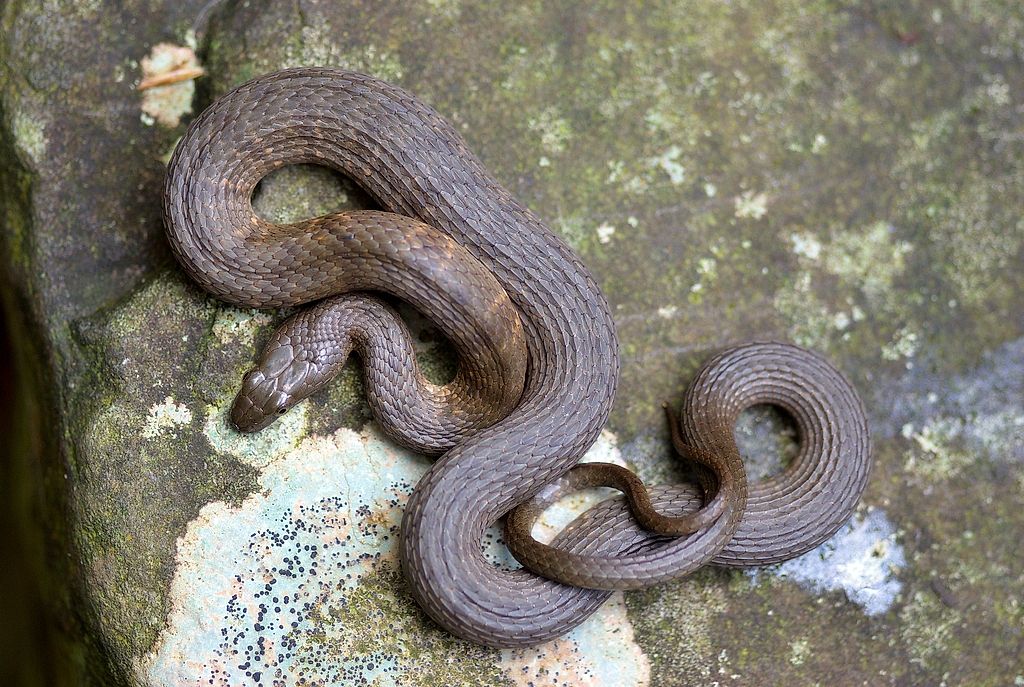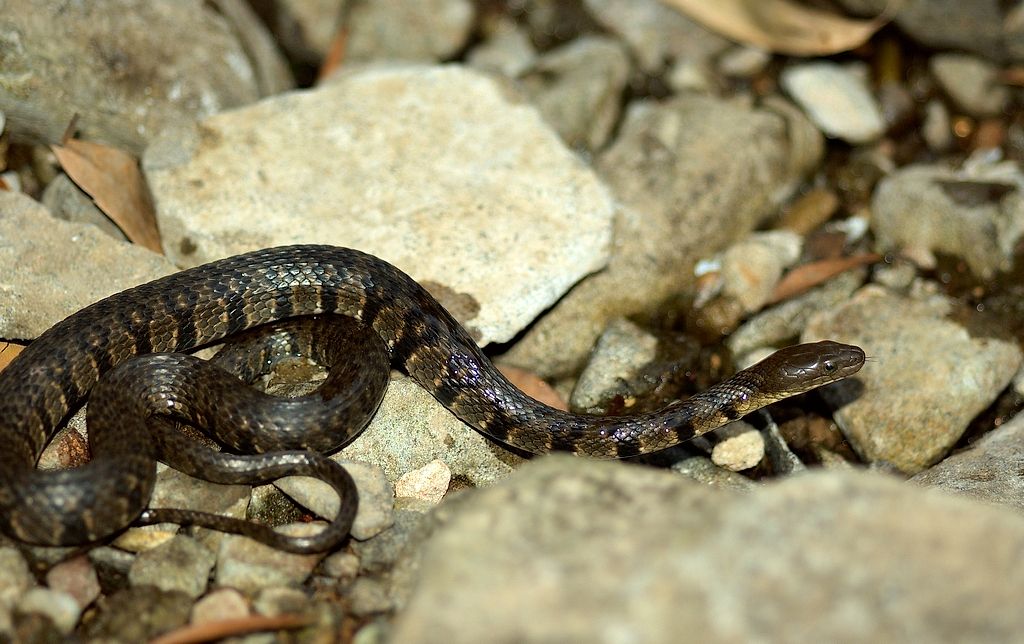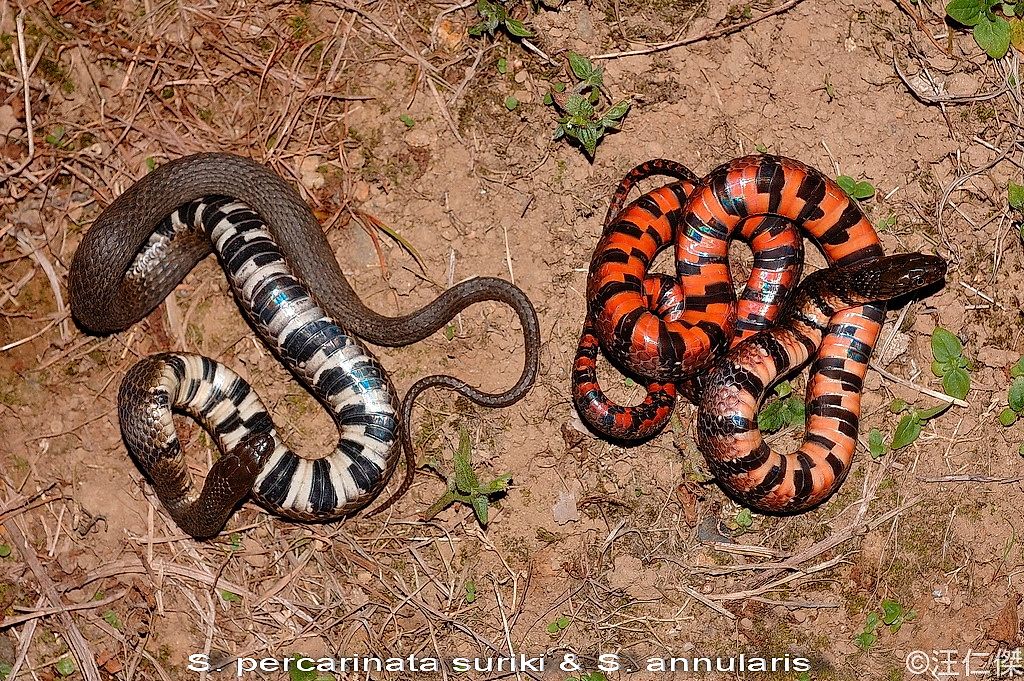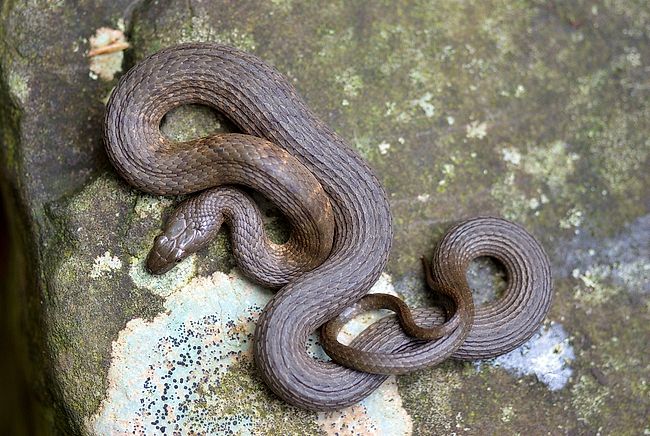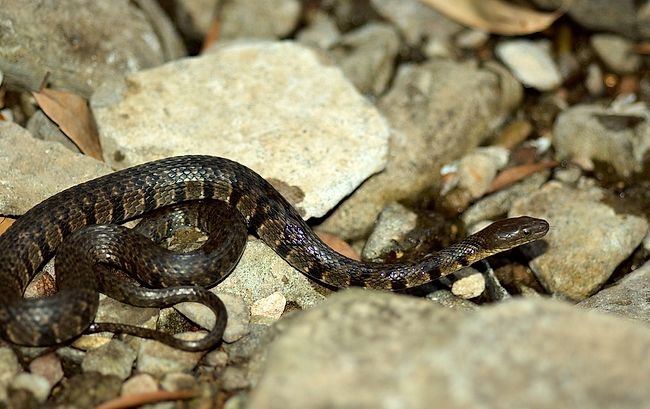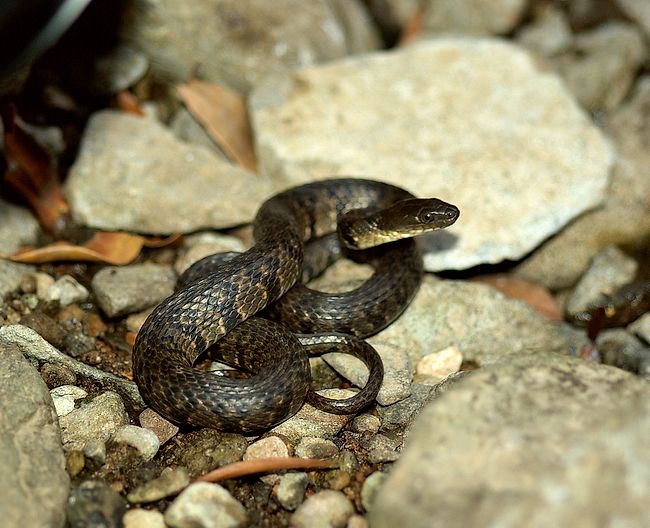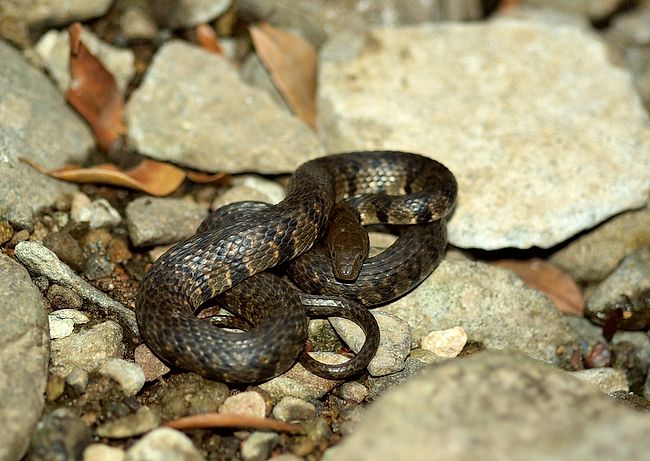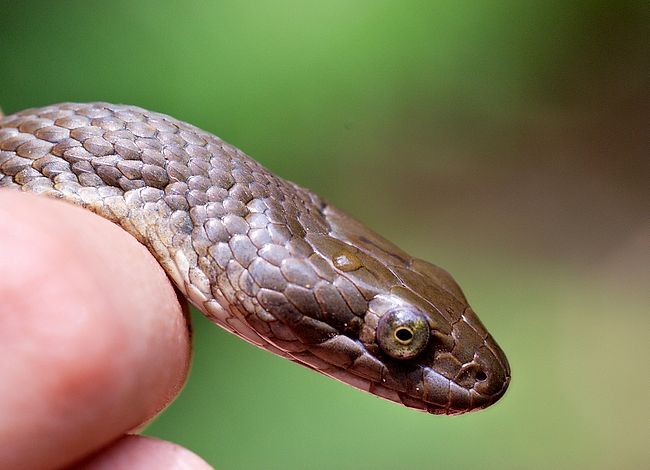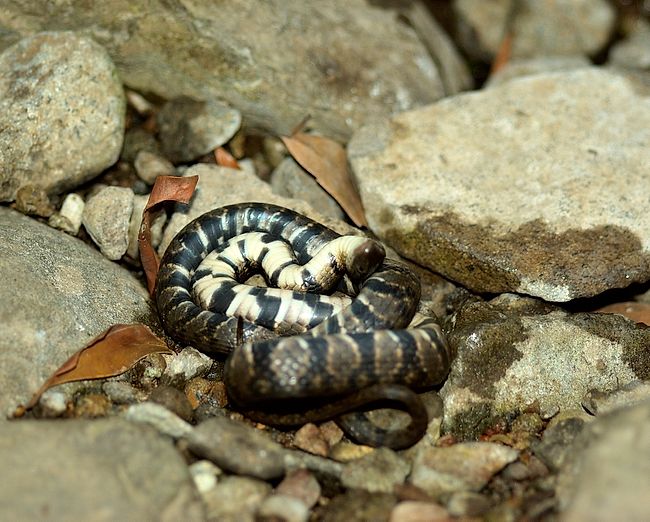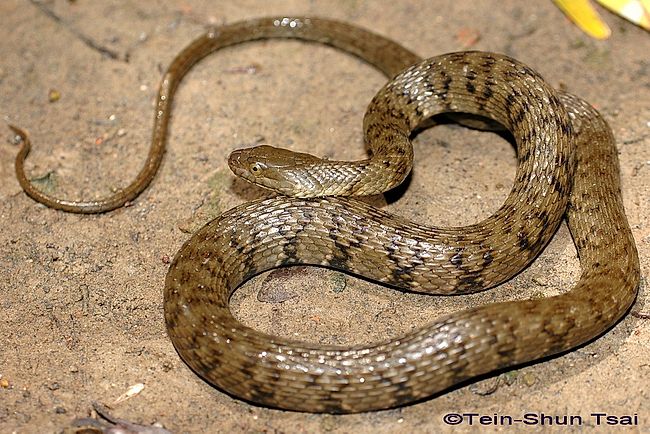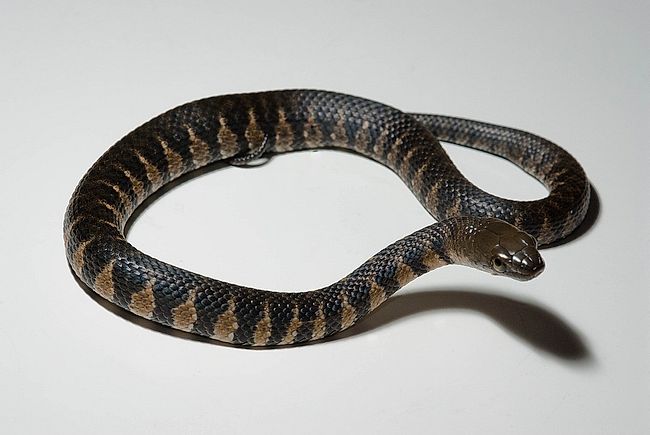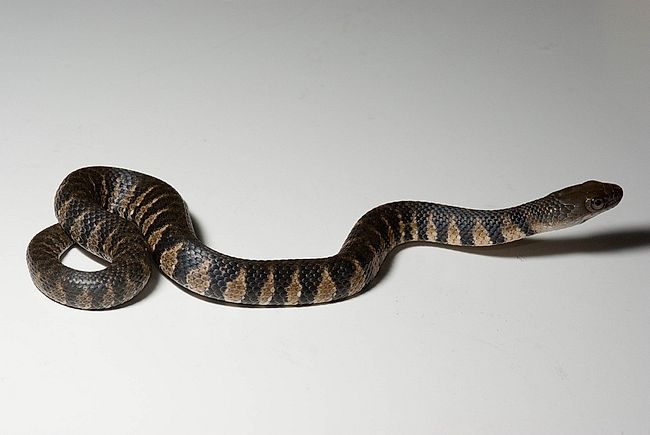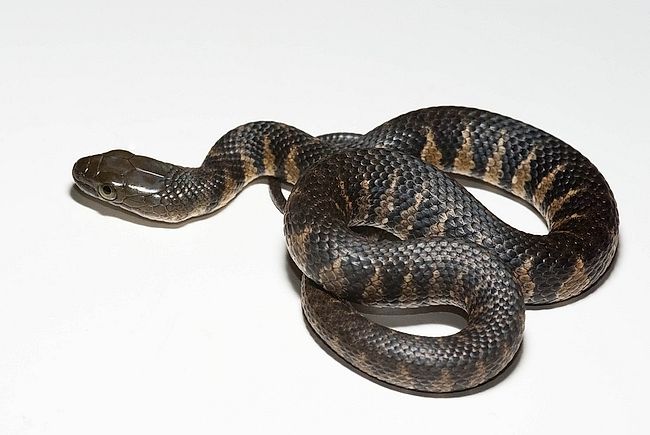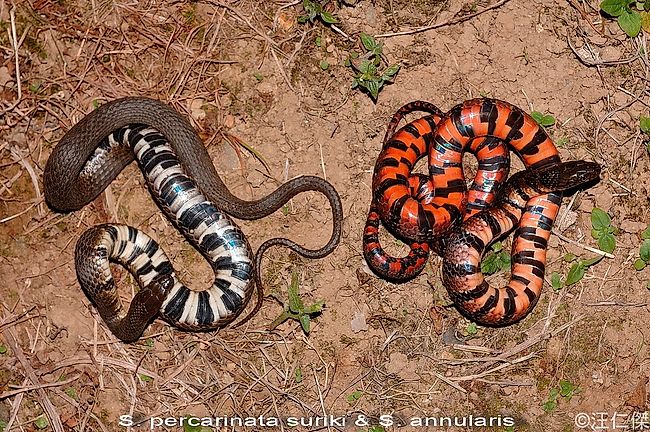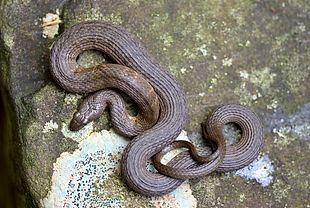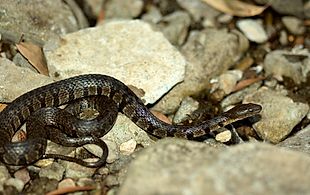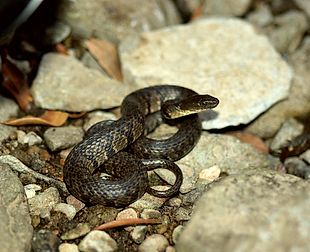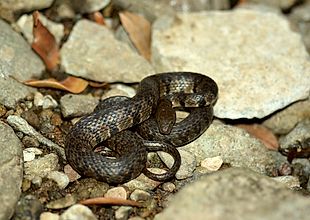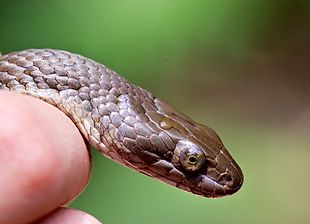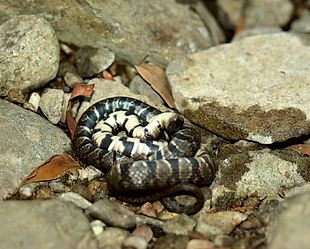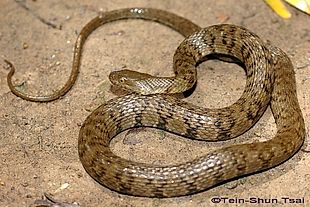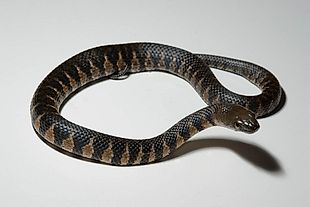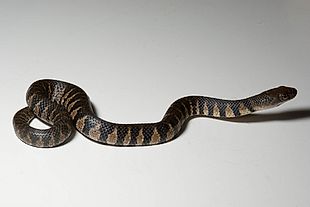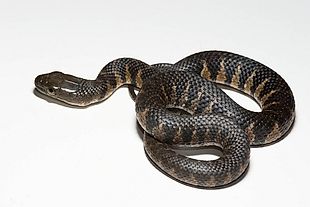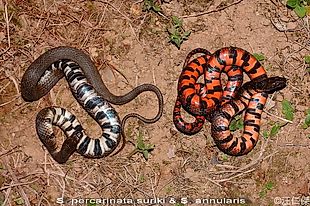Sinonatrix percarinata suriki
Eastern Water Snake
白腹游蛇 (bai2fu2you2she2)
Status: Not Protected
Non-venomous
Family
Colubridae, subfamily Natricinae
Max. length
100 cm
Occurrence in Taiwan
Throughout Taiwan, at elevations of 500-1000 m.
Global Distribution
Endemic to Taiwan.
Description
This snake is
small to medium size; total length up to 100 cm. There are 17-19 (19 at
mid-body) rows of scales, all strongly keeled except for the outermost
row. Head is oval to slightly triangular; body is moderately stout and
round; tail is long. Eye is medium to large; iris is yellow, darkened by
coarse diffuse black pigment, and pupil is round, slightly off center
(toward upper part of eye), black surrounded by ring of dull yellow.
Tongue is flesh-colored, darkened by diffuse black pigment. Upper head is
uniform dusty gray to olive gray; the labials are slightly lighter than
upper head due to light gray mottling. Upper body and tail are gray to
dark gray, with irregular cross bands of black or darker gray. Ventral
head and neck are dirty white to light cream gray, and the following
scales are tinted with gray which become progressively more intense posteriorly.
Ventral body and tail also bear scattered quadrangular or irregular marks
of blackish pigment which are irregularly arranged on sides. Anal scale is
divided and subcaudals are paired.
Biology & Ecology
This cathemeral (diurnal or nocturnal) snake inhabits rivers, creeks and
(to a lesser degree) ponds and is especially fond of very clean water.
It preys on shrimps, tadpoles, frogs, and fish. Females produce 4-25 eggs
per clutch in summer and habitually protect them; hatchlings measure about
17 cm in total length.
When disturbed, the snake can become quite aggressive; it may strike and attempt to bite,
and also empty its anal glands for extra olfactory effect.
Etymology
Sinonatrix: "Sino" is New Latin for "Chinese"; natrix is Latin for "water snake";
percarinata is Latin for "keeled", referring to the snake's keeled scales.
The subspecies epithet suriki is a term used by certain Taiwanese tribes to describe
the animal's aggressiveness.
The Chinese name 白腹游蛇 (bai2fu4you2she2) literally means "white-bellied (白腹)
swimming snake (游蛇)".
